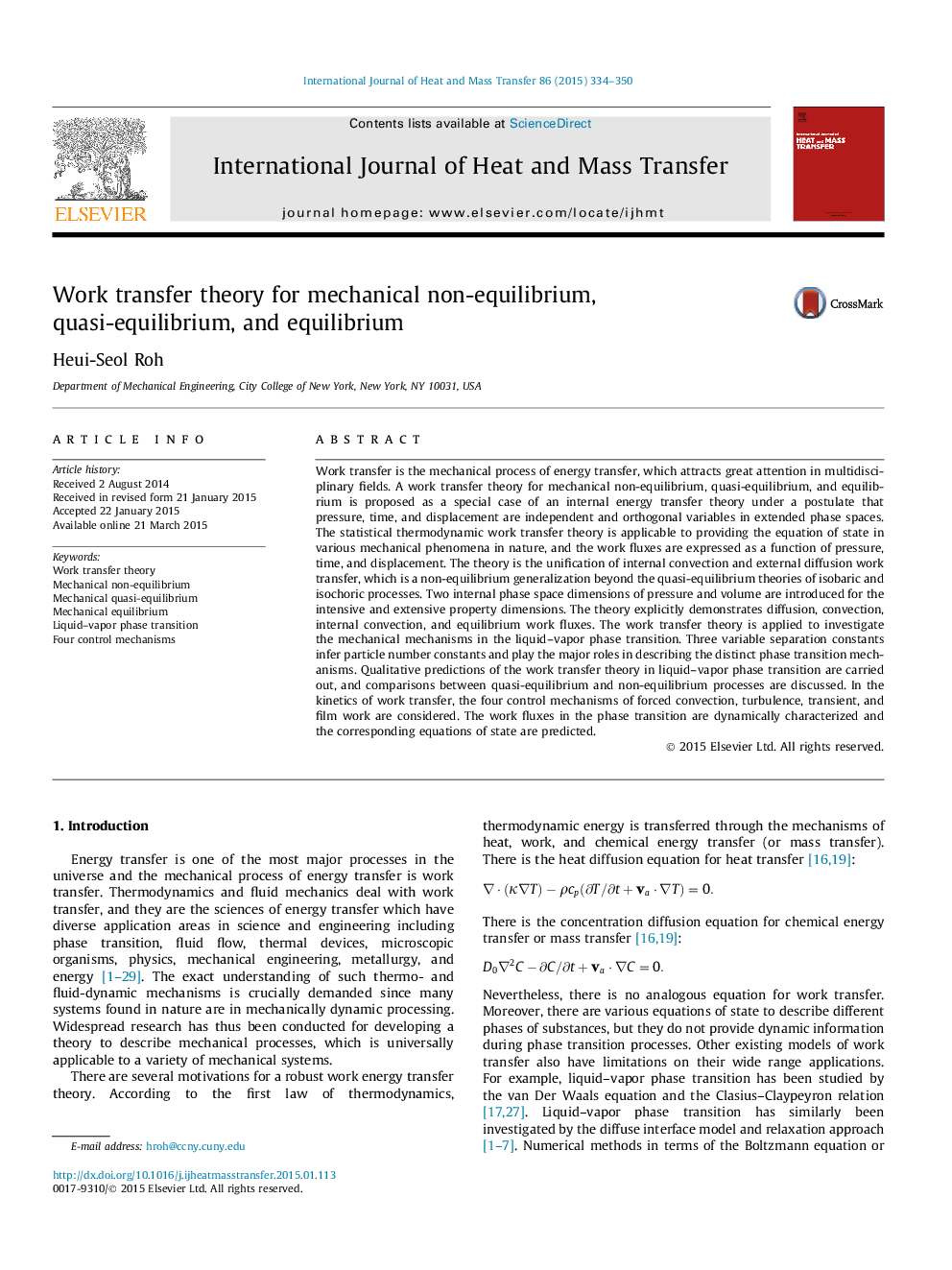| Article ID | Journal | Published Year | Pages | File Type |
|---|---|---|---|---|
| 656742 | International Journal of Heat and Mass Transfer | 2015 | 17 Pages |
Work transfer is the mechanical process of energy transfer, which attracts great attention in multidisciplinary fields. A work transfer theory for mechanical non-equilibrium, quasi-equilibrium, and equilibrium is proposed as a special case of an internal energy transfer theory under a postulate that pressure, time, and displacement are independent and orthogonal variables in extended phase spaces. The statistical thermodynamic work transfer theory is applicable to providing the equation of state in various mechanical phenomena in nature, and the work fluxes are expressed as a function of pressure, time, and displacement. The theory is the unification of internal convection and external diffusion work transfer, which is a non-equilibrium generalization beyond the quasi-equilibrium theories of isobaric and isochoric processes. Two internal phase space dimensions of pressure and volume are introduced for the intensive and extensive property dimensions. The theory explicitly demonstrates diffusion, convection, internal convection, and equilibrium work fluxes. The work transfer theory is applied to investigate the mechanical mechanisms in the liquid–vapor phase transition. Three variable separation constants infer particle number constants and play the major roles in describing the distinct phase transition mechanisms. Qualitative predictions of the work transfer theory in liquid–vapor phase transition are carried out, and comparisons between quasi-equilibrium and non-equilibrium processes are discussed. In the kinetics of work transfer, the four control mechanisms of forced convection, turbulence, transient, and film work are considered. The work fluxes in the phase transition are dynamically characterized and the corresponding equations of state are predicted.
